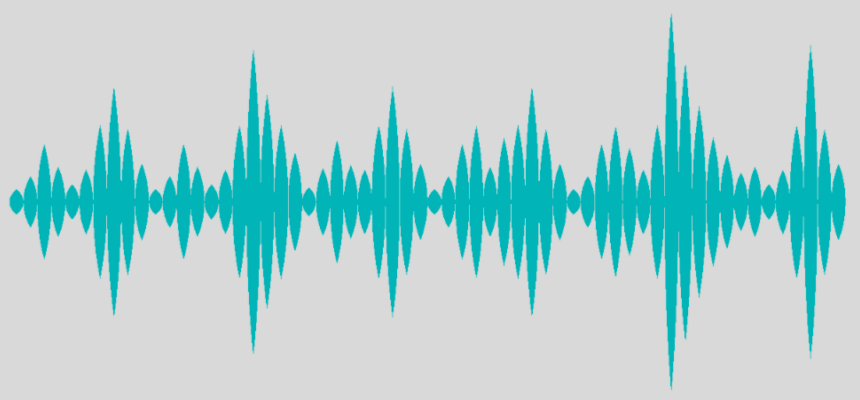S is for . . .


Sound surrounds us. So much so that we often tune it out, regarding it as nothing more than noise.

The late composer R Murray Schafer (who died earlier this year) popularised the idea of the soundscape, and did much to broaden the field of acoustic ecology - the study of the impact of noise and sound on human and animal life. You can check out our copy of Schafer’s 1967 booklet Ear Cleaning: Notes for an Experimental Music Course (with groovy period cover featuring Concorde) which is down in the Exeter Library stack. It’s as much meditational guide to attentive listening as educational programme. When sound becomes noise it can be intrusive and distressing. But sound can also be healing and provide an aural balm which greatly contributes to our overall wellbeing.
When does sound become music? If music is defined as a pleasing or stimulating ordering of sounds, then perhaps we can hear it in a much broader context than we previously imagined
Local musician, composer and teacher Emma Welton has been creating a series of soundwalks which tune into the soundscapes of her local environment. She began taking these mindful walks during lockdown and they served to demonstrate, during this time when our horizons were suddenly narrowed, that there is much to discover in the apparently familiar if we engage all our senses. Emma drew sound ‘maps’ of these walks which both recorded her experiences and suggested ways in which others might experience their neighbourhood in a fresh and actively aware fashion. When the easing of lockdown allowed, Emma began conducting soundwalks with small groups. She plans more for the future, so keep your ear to the ground for further news – and in the meantime to the weave of sound in the world around you.

Exeter folk might remember a week back in 2018 when they could sit in the old medieval church of St Martin’s in the corner of the Cathedral Green and immerse themselves in the slowly overlapping sounds of resonantly ringing Tibetan singing bowls filling the hushed interior. This was an installation of Jem Finer’s Longplayer composition for Art Week Exeter. Finer designed the Longplayer as a millenium project, a piece of music which goes through a series of variations which will take a thousand years to play through. The ancient technology, which Finer describes as a Bronze Age sine wave oscillator (or prehistoric synthesiser) already makes a connection with deep history. It reaches into the past to project us into a far off future, and does so by stretching out and slowing down time. Tuning into the Longplayer, which has a permanent listening post at the Trinity Buoy Lighthouse in London but which can also be streamed, you are hearing something which has already amassed a 21 year duration with a potential for drifting onward across centuries. The listening experience is deeply meditational both in terms of the sound itself and of the concept it carries. Bathing in its warm gonglike tones, you are lifted free of the speeding temporality of the modern world and transported into a state of suspended, slow time. The perspective of a tree, perhaps. Exeter Library has a book on the Longplayer, donated as part of Art Week Exeter, so you can read more about its conception and the ideas behind it.
Longplayer - Listen

The silences of lockdown, in particular the extraction of car, lorry and plane noise from the soundscape, resulted in a lot of people hearing the spring bird chorus more vividly than they had for a long time. Perhaps more than they had in their lives before that strange period of suspension. The writer Steven Lovatt wrote a book called Birdsong In A Time Of Silence which reflected on his own personal experiences and made broader observations on this phenomena in which elements of the natural soundscape, submerged beneath the noise of the mechanised human world, rose to pre-eminence once more. The beneficial effects on mental wellbeing of time spent in natural environments has long been recognised. The writer Richard Mabey wrote about his own recovery from serious depression in the book Nature Cure. Earlier this year Exeter University, in collaboration with the BBC, conducted a Virtual Nature Experiment into the positive effect of sound recordings and visual imagery from the natural world upon mental wellbeing. In recognition of these benefits, the BBC now has a Soundscapes for Wellbeing site which provides listeners with natural sound environments to bathe in. Soundscapes for Wellbeing - Canvas (bbcrewind.co.uk)
The sounds of the natural world, when listened to attentively, foster a sense of communion with the great interconnected pattern of living things. Taking you temporarily out of your daily concerns it can engender a more deeply rooted sense of being. During lockdown, writer, musician and RSPB officer Tony Whitehead and writer, ecologist and storyteller Lisa Schneidau made a series of recordings of natural environments on and around Dartmoor. They give a sense of the soundscapes of this wild place, where the noises of the human world are largely absent.
Music itself can have healing and calming properties. Over the lockdown period, the musician Richard Norris began producing a series of long, meditative pieces under the generic title Music for Healing. Designed to aid stress relief, and with proceeds from sales donated to mental health charity MIND, these calm, drifting 20 minute oases of sound drew on the deep listening ideas of Pauline Oliveros and the longform electronic drone compositions of Eliane Radigue. Tests with neuroscientists at the University College London aim to determine the nature of any healing effect on the brain. Meanwhile, the series has continued throughout 2021 with a piece created for each month.
Richard Norris - Music for Healing
Music has been used for calming, spiritual and meditative purposes for millennia, from the slowly unwinding scales of Indian classical music to the medieval plainsong of the Abbess Hildegard of Bingen, the soothing nocturnal balm of Bach’s Goldberg Variations to the polyphonic choral clouds of Tallis and Byrd, the static piano of Eric Satie’s Gymnopedies and Gnosiennes to the ambient haze of Brian Eno. Numerous mixes of calming and meditative music exist online. Here are a couple which draw on music available via the Naxos Music Library, which you can access via your Devon Library Card here.
